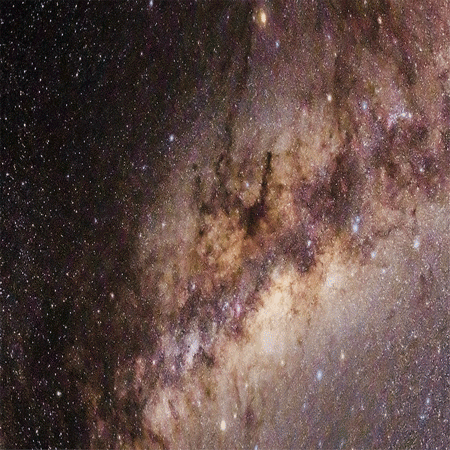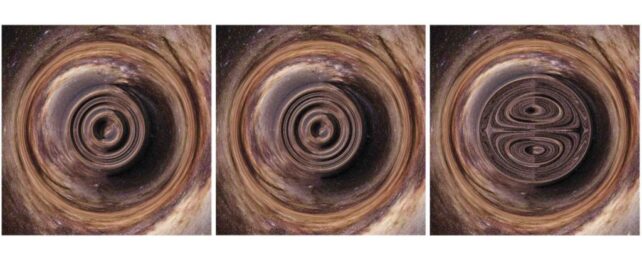Predicted over a century ago as monstrous concentrations of mass that torture the fabric of the Universe into traps of light and information, black holes are now established as objects of fact.
But might every distortion of light we now come across be a certified concentration of infinite density, or should we leave room for the possibility that other exotic breeds of cosmic oddity might look uncannily like a hole in space as well?
Using mathematical modeling preserved for string theory, a trio of physicists from Johns Hopkins University in the US found some objects that look like black holes from afar might be something else entirely up close: a new type of hypothetical exotic star called a topological soliton.
Given string theory is a hypothesis begging for a means to be tested, these strange objects exist only on paper, floating about in the realm of pure mathematics. At least, as far as we know. But even as a theoretical construct, they could help us one day distinguish the true black holes from impostors.
"How would you tell when you don't have a black hole? We don't have a good way to test that," says physicist Ibrahima Bah. "Studying hypothetical objects like topological solitons will help us figure that out."
Black holes are arguably the most mysterious known objects in the Universe. Heck, we didn't even have concrete confirmation of their existence until the first detection of gravitational waves in 2015, less than 10 years ago. That's because black holes are so dense that their gravity warps the space-time around them to such a degree that, within a certain distance known as the event horizon, nothing in the Universe is fast enough to achieve escape velocity. Not even light in a vacuum.
This means that black holes emit no light we can currently detect, making them, well, invisible; and, since light is the main tool in our kit for understanding the Universe, we can really only learn about them by studying the space around them.
The black hole itself is mathematically described as a one-dimensional point of infinite density – something which itself doesn't really equate anything meaningful in physics.
But we can also imagine other bizarre manifestations of physics behaving in a similar way. One example is boson stars, hypothetical objects that are transparent and therefore invisible, just like black holes.
Now, the small group led by physicist Pierre Heidmann has found that topological solitons represent another. These are sort of gravitational kinks in four-dimensional space-time predicted by string theory, in which the smallest elements of the Universe are not pixel-like points, but tiny vibrating strings.
From a distance, the area surrounding these kinks doesn't stand out as all that unusual. Up close, however, the topology of space is heavily distorted.
The team constructed their topological soliton mathematically, and then plugged their equations into simulations to see how it would behave. They overlaid the simulations over real pictures of space to get the most accurate understanding of how their construct would behave.
From a distance, the topological soliton looked exactly like a black hole, with light appearing to be swallowed.
At closer proximity, however, the topological soliton got weird. It didn't capture light as a black hole would at all, but scrambled it and re-emitted it.

"Light is strongly bent, but instead of being absorbed like it would in a black hole, it scatters in funky motions until at one point it comes back to you in a chaotic manner," Heidmann says. "You don't see a dark spot. You see a lot of blur, which means light is orbiting like crazy around this weird object."
String theory is an attempt to resolve a long and vexing tension in physics: between quantum mechanics, which describes how things behave on very small scales, and general relativity, which describes the larger scales. Quantum mechanics breaks down on relativity scales, and vice versa, which bothers physicists no end, because they should be able to play together nicely.
A unified theory of the two, what we call quantum gravity, has proven elusive. The topological soliton is the first string-theory based object that corresponds to the behavior of a black hole, demonstrating that quantum gravity objects can be used to describe real-world physics.
"These are the first simulations of astrophysically relevant string theory objects, since we can actually characterize the differences between a topological soliton and a black hole as if an observer was seeing them in the sky," Heidmann explains.
We don't expect to see them in the sky, obviously, but probing the possibilities could help scientists better understand the tension between quantum mechanics and general relativity, in the hope of one day bringing us to a resolution.
"It's the start of a wonderful research program," Bah says. "We hope in the future to be able to genuinely propose new types of ultracompact stars consisting of new kinds of matter from quantum gravity."
The research has been accepted in Physical Review D.
